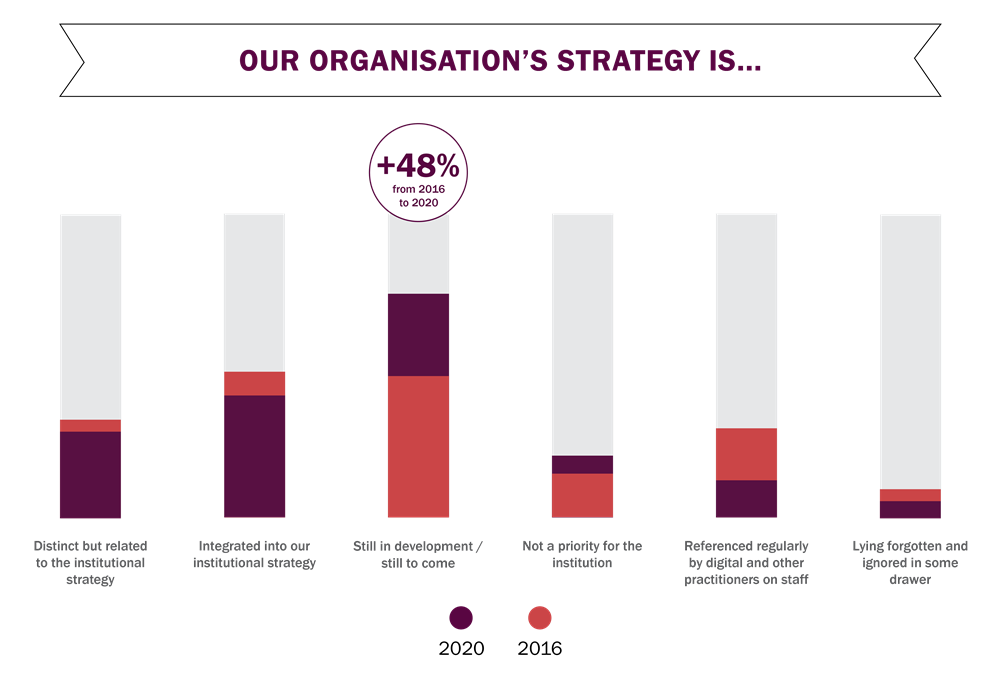This year, in partnership with MuseWeb, Axiell conducted a survey to assess the status of digital transformation at museums, libraries, galleries, archives, and other cultural institutions around the world.
With input received from 120 professionals across the industry, its newly published 2020 Cultural Sector Digital Transformation Report explores digital strategies and priorities during one of the most challenging operating environments in history.
This multi-year report compares survey responses gathered in 2016 to those gathered this year, giving insight into how digital strategy has shifted in recent years and since the outbreak of Covid-19.
The research affirms that for cultural institutions developing and implementing a digital strategy isn’t a matter of ‘one and done’. In fact, the deeper cultural organisations get into digital the more opportunities they uncover to broaden their work – and its impact.

Digital innovation has played a key role in keeping many cultural institutions active during national lockdowns. As cultural stewards, these institutions picked up the mantle to address a public starved for connection, socialisation and educational opportunities while in isolation.
They did this while facing restricted resources, personal grief and the discomfort of rapid digital transformation. Axiell suggests that while the data demonstrates some institutionalised discomfort with digital and feelings of unpreparedness, the sector’s response to the pandemic has been nothing short of heroic.
Some highlights from the research reveal:
- 58% of respondents indicated that their organisation’s digital strategy is still in development or still to come – a figure that grew from 37% in 2016 – a 57% increase.
- 50% of respondents also agree or strongly agree that they are in a constant state of flux with resources that are unpredictable.
- 55% of respondents are prioritising investment in digitising their collection, up from 49% in 2016. Axiell believes this is a strategy to lay strong foundations for digital growth.
- In 2016, 9% of respondents said it was a smooth process to enrich the data for their digital media and share it online. Happily, that number has climbed to 16% in 2020, a 78% increase.
The report includes:
- The status of digital transformation strategies across galleries, libraries, archives and museums
- Industry effects of the pandemic and the inspiring resilience of cultural institutions
- Case studies of cultural institutions at different stages of digital transformation
- A how-to guide for digital transformation based on your institution’s stage in the transformation process
Grab your copy of Axiell’s 2020 Cultural Sector Digital Transformation Report.











